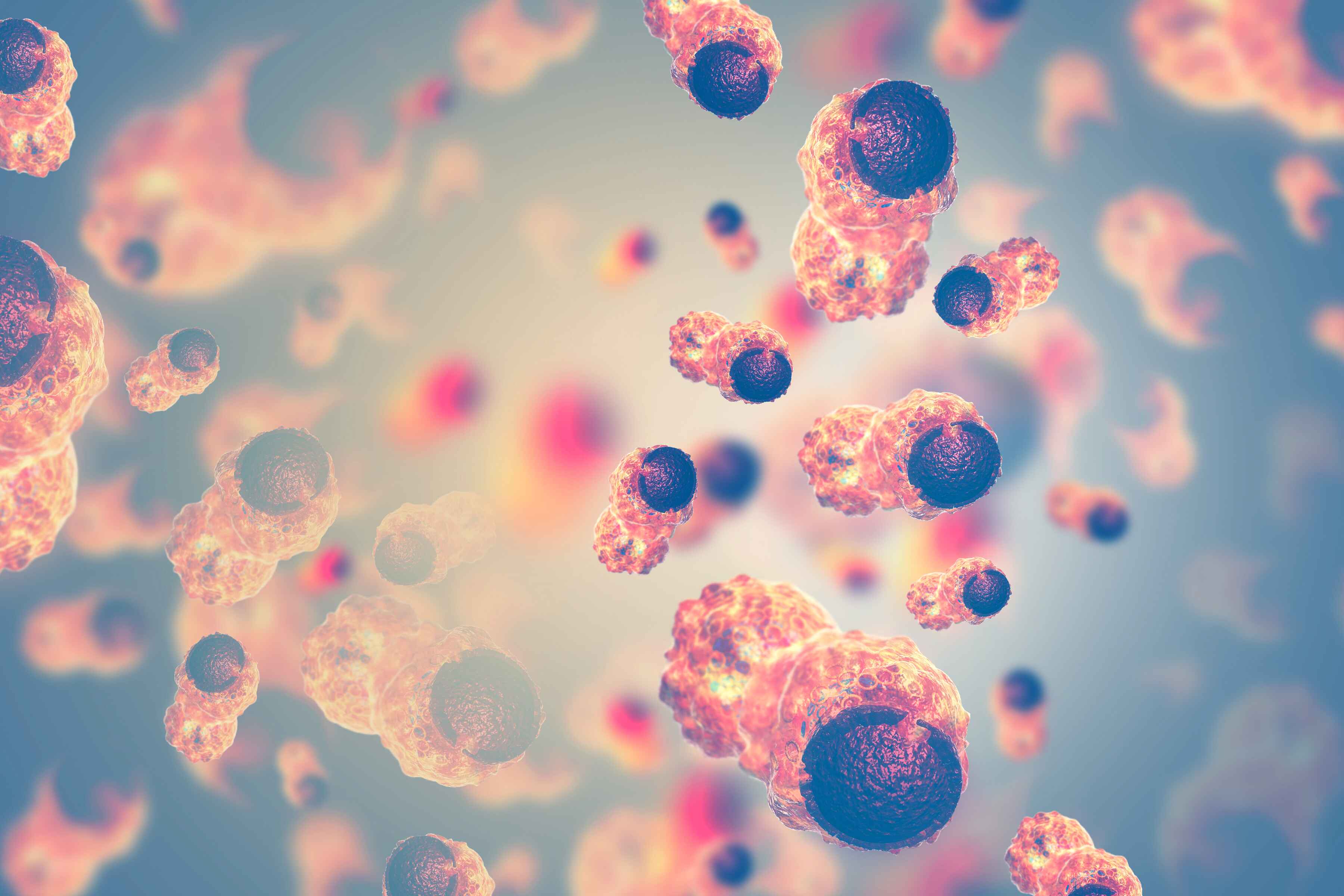
The new device uses terahertz spectroscopy to identify biological compounds in the body that arise as a result of organ damage by chemotherapy drugs. Early identification of these compounds, known as nitriles, can help prevent significant harm to the patient as they undergo chemotherapy treatment for a range of cancers.
A team of researchers, including Khalifa University’s Mauro Pereira, Professor of Physics, has developed a device that could detect damage to a patient’s kidneys at the very onset of chemotherapy treatment, four to six months before it would be clinically diagnosed.
The team included researchers from Lobachevsky State University, Russia, the Institute for Physics of Microstructures, Russia, the University of Montpellier and the Czech Academy of Sciences. Their results were published in Scientific Reports.
Platinum-based chemotherapy is used to treat a variety of cancers, such as lung, breast, ovarian, and colon. Platinum compounds damage the DNA of cancer cells, preventing them from multiplying. But in some cases, there are serious side effects for the patient.
All cytotoxic chemotherapy drugs, including platinum-based drugs, may induce a range of severe side effects due to their poor selectivity for cancerous tissue over normal tissue. The drugs are known to cause kidney damage — nephrotoxicity — and liver damage — hepatotoxicity. Terahertz (THz) photonics may help deal in the early identification of this damage.
Terahertz photonics is developing quickly thanks to the increasing availability of new materials, sources, and detectors, Prof. Pereira said. “We focused on what may become one of its more impactful applications: metabolomics, the systematic study of the chemical compounds (metabolites) that stem from cell metabolism.”
Metabolites and their concentrations are directly connected to the underlying biochemical activity and state of cells, tissues, and organs, providing an opportunity for the development of new diagnostic techniques. In particular, analyzing the chemical composition of exhaled breath and biological liquids (blood, saliva, urine) can provide important information about diseases and pathological processes.
The research team identified a set of nitriles that either appeared after chemotherapy or increased in content as a result of bio-chemical damage to the liver following platinum-based chemotherapy. It’s not possible to detect damage to the body immediately post-treatment using existing clinical methods, but the identified nitriles are candidates for further large-scale systematic testing toward markers for nephrotoxicity at an early stage of the treatment.
Using THz photonics, the researchers can track the damage caused to the liver and kidneys during cancer treatment by monitoring the levels of these nitriles in patients’ urine.
Existing techniques used in clinics are limited to standard laboratory methods, such as biochemical blood tests and clinical urine analysis. However, they reveal only significant organ failure, not the subtle side effects that happen at the start of treatment, which could help medical teams correct the treatment before it escalates to more significant damage.
It’s rare after the initial courses of platinum-based chemotherapy to detect the signs of renal failure, Prof. Pereira said. “As a rule, changes in biochemical parameters appear after four to six courses, or four to six months after the start of the treatment.”
This could be too late to intervene and prevent significant organ failure. The research team built a sensor that can interpret the signs of subtle damage to the kidney tissues immediately after exposure to the chemotherapy drugs and before the appearance of other measurable clinical symptoms.
“We want to determine guidelines to detect the onset of damage before it develops into actual damage to the organ,” Prof. Pereira said.
This is where non-stationary high-resolution THz spectroscopy could help.
This technique can be applied to gases, vapors of liquids, or solid-state samples to determine the biological compounds within.
The central theory of spectroscopy is that light is made of different wavelengths that each have a different frequency. Every molecular compound is characterized has a unique light spectrum described by the frequencies of radiation it emits or absorbs. Researchers can examine a sample to identify the compounds within by identifying the frequencies detected.
“Our devices are game-changers for THz spectroscopy of liquids,” Prof. Pereira said. “They allow for analysis of four different frequency ranges for evaluation of most liquid substances. A spectral interval is analyzed that bypasses the strong absorption lines from substances such as water and ammonia, which may otherwise mask the detection of the target metabolites.”
The research team focused on identifying nitriles, as their presence in urine vapors may arise from the decomposition of a protein found in the body and be an indicator of subclinical renal toxicity, which cannot be detected by standard clinical methods.
“Our goal was to develop a dedicated spectrometer measurement technique and an initial set of candidate markers as a starting point for large-scale studies,” Prof. Pereira said. “Our device is efficient but does rely on complex components, which limits the frequency tuning, increases cost, and reduces output power. There is great potential for improving our device, and our work paves the way for analyzing a plethora of other liquids that, so far, cannot be accessed by existing sources and detectors.”
Jade Sterling
Science Writer
15 November 2022






